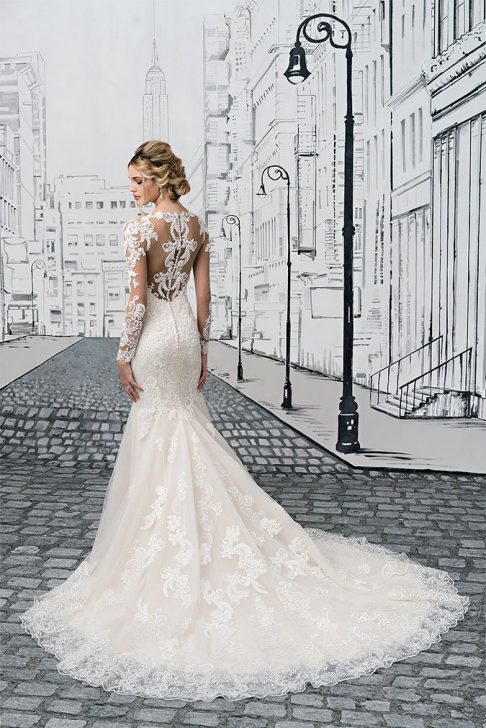
Expert Advice From Mohammad Al Haj: Fabrics & Materials Used In Wedding Dresses
Written by on January 30, 2017.
Tagged under: Contessa Bridal, Mohammed Al Haj, WEDDING GOWNS, wedding dress materials and fabrics
Expert Advice: Fabrics & Materials Used In Wedding Dresses
Do you know your tulle from your chiffon? Your organza from your voile? Back with some excellent advice regarding the different materials that are used to make a wedding dress, BCME expert panel member and founder of Contessa Bridal, Mohammad Al Haj, helpfully breaks down all of the main fabrics and materials that you may or may not have heard of when searching for your dream gown. Enjoy!
First and foremost, it is important to remember that it will be YOU who makes the dress shine on your big day. Secondly, we all have to agree that the type of materials used are important in making a gown look gorgeous and giving the bride the feeling of being a princess on her big day. With this in mind, we’ve put together a list of all the materials you can choose from to make your bridal gown look incredible. Remember, fabrics and material make the same type of dress look totally different. Read on to learn more about wedding gown fabrics, materials and how they suit different body types.
 TULLE
TULLE
This material is usually used to accompany the wedding gown, and can be used as an extra layer on the skirt. It can also be used for the wedding veil because of its light weight. There are many types of tulle such as silk or illusion tulle. It’s mostly used to create amazing ballerina type wedding dresses.
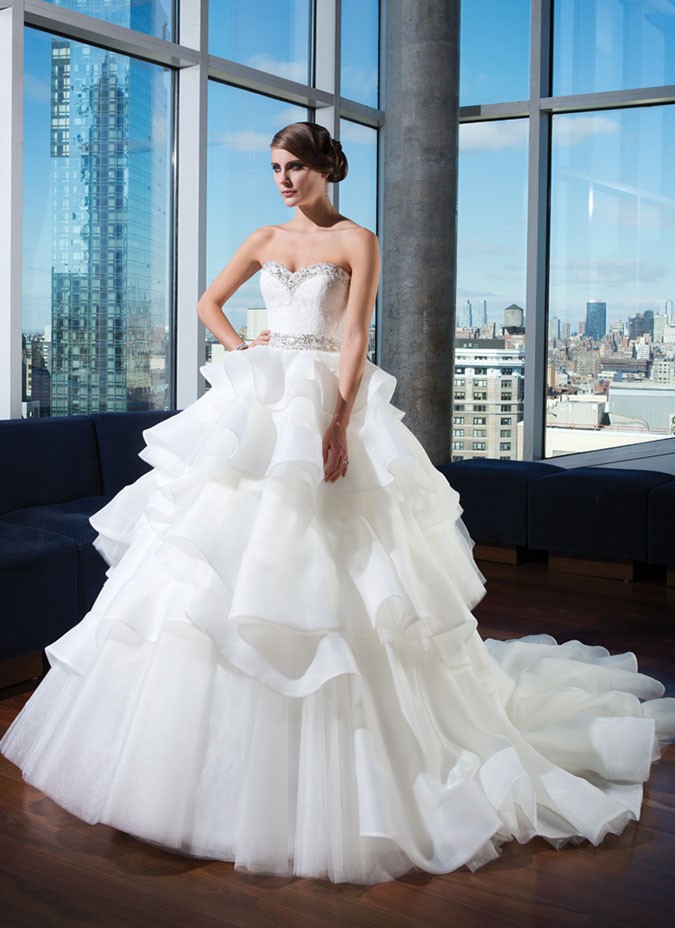
Above: Justin Alexander gown in tulle
 SATIN
SATIN
Satin is a great piece of fabric for wedding gowns as it’s suitable for any body type. Moreover, it can be used for ball, ruched, structured and draped gowns. If you are in the dark regarding what fabric to choose for your gown, go with satin because it offers great variety when it comes to design.
 CHIFFON
CHIFFON
Chiffon is one of the lightest wedding dress materials you can find. Used in overlays and layers, it offers a fluent look and can be used for drape style gowns. If you prefer a hot summer wedding (e.g. in Dubai) then this material is the solution as it is thin and lets air breeze through.
 ORGANZA
ORGANZA
Traditionally made from silk, modern organza is mixed with synthetic fabrics such as nylon or polyester. It is thin and lightweight but weighs more than chiffon. It is preferred for more structural dresses and it’s an option for a hot wedding day.
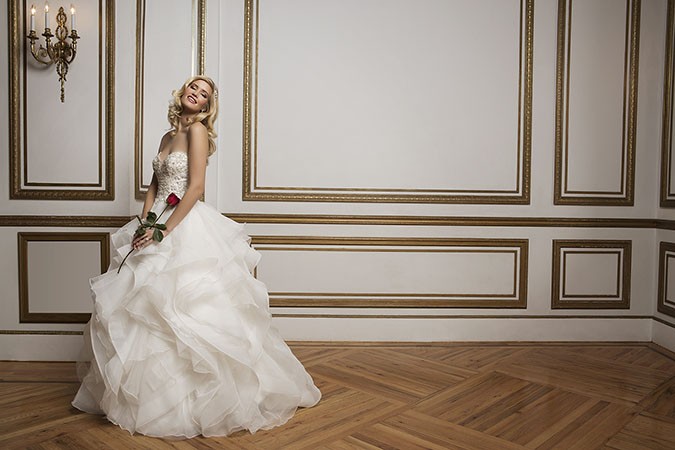
Above: Justin Alexander gown in organza.
 LACE
LACE
An elegant and exquisite material for wedding gowns, nowadays lace is made with cotton threads, but back in the day, it was made out of gold or silver threads. Even today, you can find threads made from linen or silk. Some designers still use fine silver or copper wires. It is a great option for any type of silhouette. Lace looks particularly good on ball gowns and A-line dresses.
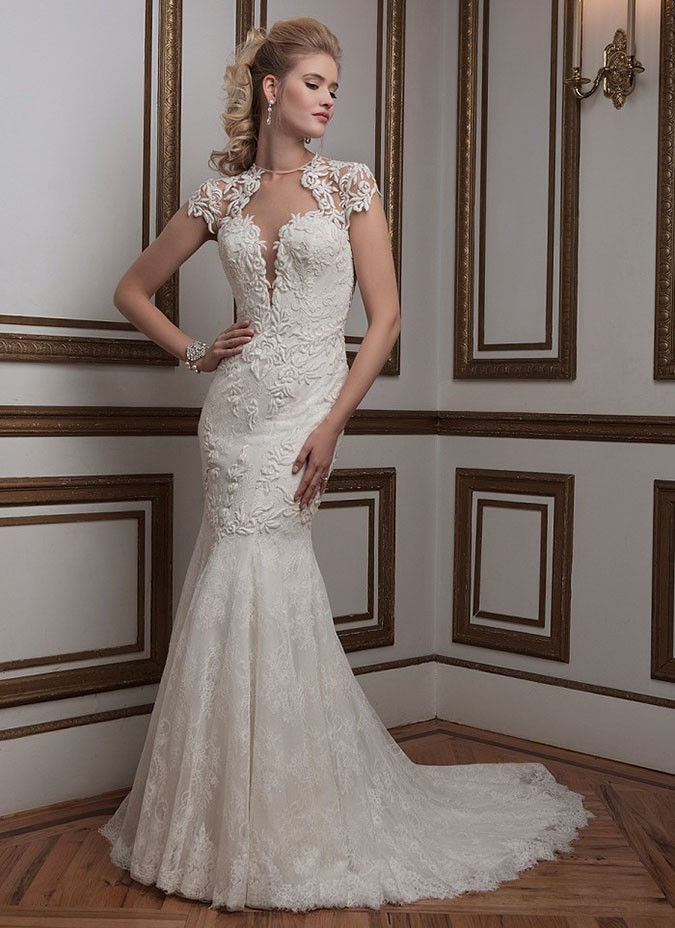
Above: Justin Alexander gown in lace.
 CHARMEUSE
CHARMEUSE
Charmeuse offers a charming and slick look. The front of the fabric has a smooth finish that is reflective and shiny. The back is duller and matte. It is best suited for column type dresses, as it accentuates the curves of the body.
 DUPIONI
DUPIONI
Dupioni, also called Douppioni or Dupion, is a plain weave type of silky fabric. Its surface is lustrous and the high-rising fibers give a quite a harsh feel. This material suits all types of wedding dresses and can be worn in every season.
 NET
NET
Net is a material that is used to add an extra dimension to a wedding dress. It’s a material that has many different usages, looking great on the neckline, on the back or on the sleeves. It also comes in many different forms and can be a great piece to accompany the dress.
 VOILE
VOILE
This material is a good option for non-conventional or informal weddings. ‘Voile’ is French for ‘veil’, so it’s not that unconventional for wedding gowns, after all! It’s usually made out of cotton so it’s a soft fabric, making it a wise choice for summer weddings.

Justin Alexander gown in voile.
 VELVET
VELVET
Velvet is a heavyweight woven fabric with evenly distributed threads. It is preferable for winter weddings. The surface of the material is very soft and has a distinctive feel.
 JERSEY
JERSEY
Stretchy and lightweight, jersey gives an exclusive look for brides who are looking for the sheath style. It is suitable for summer weddings but can be an option on a chillier day also.
 SHANTUNG
SHANTUNG
Most people mistake shantung for dupioni because the two fabrics share almost the same features. Unlike dupioni, shantung goes well only with draped style gowns. It’s one of the trendiest materials for brides and bridesmaids. If you want to add a little drama to your dress, then this fabric will bring it.
 RAYON
RAYON
If you are allergic to silk or you just want an alternative, then rayon is the fabric you are looking for. It is light and therefore perfect for summer weddings. It particularly suits A-line and sheath styles.
 BROCADE
BROCADE
If you are looking for a distinctive and more fabled look, then check out brocade dresses. Brocade looks different from other materials as the decoration pops out. Brocade is great for A-line and picturesque ball gown dresses.
 DAMASK
DAMASK
Damask is very similar to brocade and people usually mistake the two fabrics. However, damask is more lightweight, making it an alternative to the heavier and closed brocade. The most used decorations are floral ones which enhance the look of the dress.
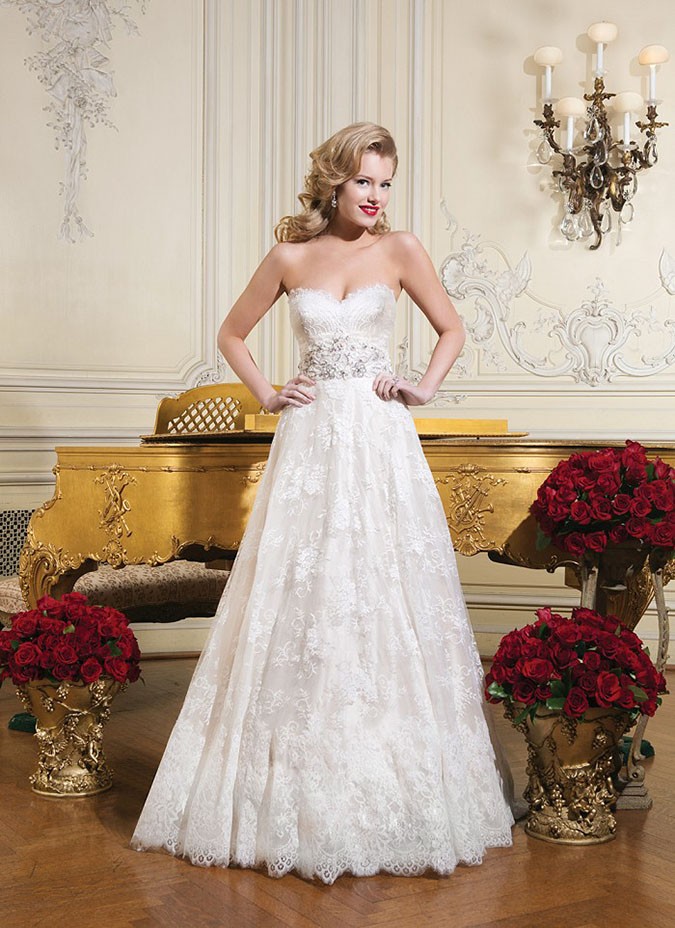
Above: Justin Alexander gown in damask.




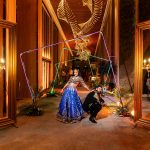
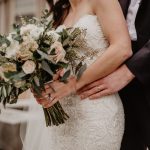

Leave a Reply